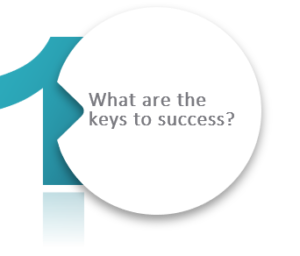
Insight
Category management success – A view from senior procurement leaders
By Mark Webb |
96% of leaders and 80% of followers have category management as a top 3 priority. Our round table discussions explore how CPOs focus on this priority
Sectors represented were Central Government, FMCG, Industry, Media, Oil and Gas, Pharma, Retail, Services and Technology.
The discussions provided insights into the opportunities, challenges and approaches taken by leaders who are driving procurement performance at some of today’s pioneering organisations.
This insight guide summarises three of the key topics discussed:
- What are the keys to success?
- How do you know you’re getting it right?
- Benefits that senior executives expect to see from an investment in category management?

Category management must be a process that is flexible and relevant
Strong processes and frameworks are fundamental for a high performing function. The procurement team carries gravitas when a robust framework is supported by the soft skills of influencing and selling into the business. category management should never be applied as a “one size fits all”, but must flex by sector, category and business need.
Make category management the “one way of doing things”
CPOs recognise that all procurement activity is category management in one form or another and needs to be perceived as such. There is not “category management” OR “business as usual” – it is all category management, whether it is a five year category strategy or a one-off negotiation. Category management gives teams a common language, narrative and single way of doing things.
Focus on what the C Suite Executives really want
Today’s CFO and CEO wants cost reduction, risk reduction and revenue enhancement. Every CPO must understand and work to these objectives and additional key competitive imperatives that are specific to each organisation, such as speed of sourcing and supplier innovation.
Build a team that understand and value the process
The undisputed view was that having a team that supports category management and can sell its benefits to stakeholders is key. We heard various approaches taken to ensure that the right people with the right skills were on board – from implementing innovative programmes to up-skill existing staff with stakeholder engagement skills to recruiting people with a sales background to access their communication skills. In addition, increasing interest in supply chains and responsible sourcing is drawing very capable graduates to a career in procurement.
See category management as a systematic creative identifier of opportunities, not bureaucracy
At its best, category management is a creative enabler that can open the minds of buyers and stakeholders to the full range of options for creating value from supplier spend. There are many ways to create value and drive savings beyond the obvious opportunities from volume consolidation and competitive leverage. Approaches discussed included cost modelling, specification optimization and supplier integration – but there was a recognition that value levers are rarely applied systematically by category managers.
Communicate in business language
There was consensus that procurement must communicate and sell to the business. When procurement initiates two way communication, using business, not procurement, language, then the business will understand the benefits that procurement can deliver.

A seat at the table and early involvement
If category leaders are embedded in functional leadership teams, and the business always requests procurement’s input, CPOs see that as evidence that progress has been made. This is often the culmination of years of effort, and hiring and training the right people that have great influencing skills.
Robust performance metrics that demonstrate good performance
Procurement must have a consistent set of KPIs, based on hard data. Great performance can be recognised in many ways including:
- Real cash savings that the business can use
- Speed of implementing sourcing strategies
- Positive stakeholder feedback
- Thoroughness of work done
- ROI from activities of the procurement team.
Procurement becomes a “business as usual” function
An interesting and widely agreed perspective was that procurement is involved in all sourcing and supplier management activity, delivering great results, but as an accepted part of the “way of doing things”. This usually comes about through recognised and significant value delivery, but also by integrating closely with the business and tuning closely into their needs and language.
Be relevant to the whole business – above and beyond just savings
Procurement must recognise the business priorities and targets that the CEO and CFO are concerned about, and make a direct contribution to these. While immature procurement teams focus only on cost savings, mature procurement teams applying category management have broader targets directly related to the business scorecard – such as assurance of supply and innovation access.

Clarified and trustworthy spend and savings data
To demonstrate, with accuracy, to the business the amount of money that is both being spent and also being made available from procurement savings.
Delivered savings
That can be used to improve business performance through reduced costs, or re-invested into revenue generation activities.
Contributions to revenue generation
By identifying and working with suppliers that can provide innovations that increase business revenues.
Risk management
Including areas such as regulation, risk and reputation, ensuring business continuity and to avoid disasters such as the UK horse meat scandal. What one thing will you focus on to increase your success?
Benchmark your category management capability
FP can help you to confirm the scale of additional benefit available to your organisation by optimising category management
We can compare you against “world class” performance and confirm what you need to change in order to optimise category management and advance to the next level of performance.
The process takes approximately five days, and the report will identify your strengths and weaknesses and a customised roadmap to optimise category management in your organisation.
Further reading
Blog post: Category management improvement planning for 2023

About Mark Webb
Managing Director
30+ years procurement experience in line management
and consulting roles.
Previous employment: Price Waterhouse, Mobil Oil and QP Group
Education: BSc in Management Science and MSc in Business by Research, Aston University
CIPS: Member




